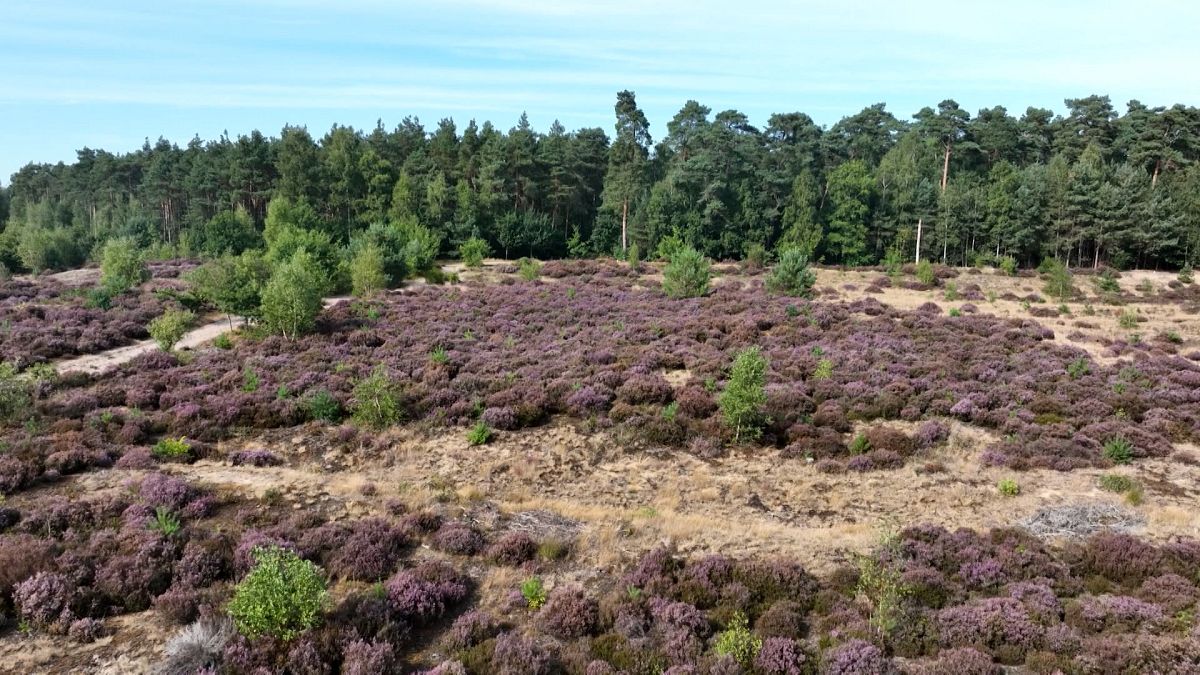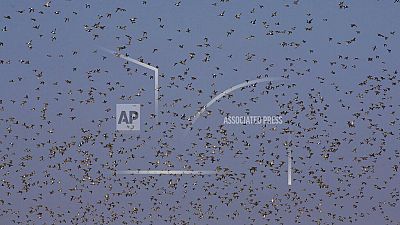Heathlands are critical stopping off places for birds crossing Europe.
From the deserts of North Africa to the temperate zones of Northern Europe, migratory birds depend on ancient heathlands for rest, food and places to breed.
But soaring temperatures and prolonged heatwaves are causing irreversible damage to these delicate ecosystems and the birds that depend on them. This year 15% less birds are using European heathlands as stopover points.
Species like the tree pipit are particularly affected, struggling to survive after their long migrations from sub-Saharan Africa due to suboptimal conditions encountered upon arrival, according to BirdLife International and the European Commission.
“When you consider migratory species, particularly birds, they are travelling vast distances. Overlay climate change on that, and the pressures become clear. At what point do these habitats become too hot for both migratory and resident species?”, Neil Lister of the Suffolk and Essex Coasts and Heaths National Landscape explains.
The current European heatwave has been one of the most prolonged and intense on record. Lasting more than two months, temperatures have consistently exceeded historical averages, with some areas experiencing unprecedented highs. This prolonged heat has led to significant ecological stress, particularly on heathlands, which are critical stopover points and breeding grounds for migratory birds.
What are heathlands and why are they important for wildlife?
A heathland is an open space of low-growing plants created by humans during the Bronze Age, according to the UK's RSPB charity.
You'll find heathlands in Germany, the Netherlands, Denmark, Spain, France, and the UK and they're characterised by heathers, gorse and grasses growing in sandy, acidic soils.
Over the last decade, heathlands across Europe have faced significant degradation. Between 2000 and 2018, the extent of heathlands and shrubs decreased by 1.2%, primarily due to afforestation, fires, and urban sprawl, exacerbated by global warming, according to the European Environment Agency.
In Spain's northwest, more than 7,000 hectares of European dry heaths were lost between 2003 and 2011, representing a 20.3% reduction, according to MDPI.
Post-Brexit it's harder to look after British heathlands
Neil Lister emphasises the importance of collaborative conservation efforts: “There's no point in us working on our own if we're missing a basic trick from the heathland managers elsewhere. I'm still in contact with the heathland managers in Europe. We must continue to work together. The birds themselves are European.”
Before Brexit, Neil Lister co-led a European partnership funded by the EU, focusing on cross-border conservation.
He emphasises the importance of maintaining communication channels and consistent conservation practices no matter what's happening in politics. “It’s reassuring to know that contact remains, the channels of communication are still open, and this collaborative way of working isn’t entirely lost,” Lister says.
Protecting ecosystems is vital not only for preserving biodiversity but also for maintaining the ecological balance that supports life. As climate change continues to impact these regions, preserving these critical resting areas and the biodiversity they support remains a key focus for conservationists across Europe.
Where else in Europe are heathlands being affected?
On the Jutland Peninsula in Denmark heathlands serve as vital stopover sites and breeding grounds for numerous bird species. The ongoing temperature rise has led to significant habitat alterations, making it difficult for birds to find adequate food and shelter.
Dutch heathlands are facing similar pressures, with increased temperatures leading to a shift in plant species composition and a decline in insect populations, essential food sources for migratory birds.
French heathlands are also under threat, experiencing similar pressures from rising temperatures and habitat degradation, impacting local and migratory bird species, according to Research and Innovation.
Heathlands are vital carbon sinks
It's not just birds that suffer when heathlands are damaged. They're also critical carbon sinks, helping to mitigate climate change by absorbing and storing carbon dioxide.
They support a wide range of biodiversity, including rare and endangered species. The dense root systems of heathland plants prevent soil erosion, maintain water quality, and regulate water flow, reducing the risk of flooding during heavy rainfall and maintaining a steady water supply during drought periods, accroding to Heart of England Forest.















